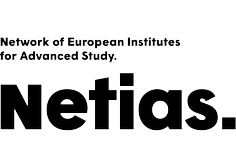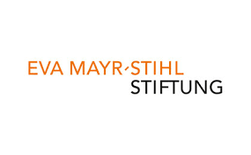Andreas Manz
April 2009 – September 2010
Head of Research
Korea Institute of Science and Technology (KIST)
Universität des Saarlandes
Research
Campus E 71
D-66123 Saarbruecken, Germany
Andreas Manz is one of the pioneers in microchip technology used for chemical applications. He was involved in the development of high speed analyzers based on capillary electrophoresis, liquid chromatography and flow injection analysis. These analyzers are based on the microfabrication know-how originally developed for microelectronics. He conducted most of his early research with his group at Ciba-Geigy Ltd. in Basel, Switzerland, then at Imperial College in London, United Kingdom, and finally, at ISAS – the Institute for Analytical Sciences, Dortmund Germany. He developed a novel concept for Miniaturized Total Analysis Systems (µ-TAS), which involves sampling, sample pretreatment, separation, and detection performed in an integrated microsystem, with a chemical parameter (for example, the concentration of a compound) that is periodically transformed into an electronic or an optical signal. Such a system is in fact a hybrid which offers the advantages of a sophisticated analysis system within the size of a chemical sensor. He published over 220 papers in scientific journals, which are cited over 11,000 times. In addition, he is inventor in 39 patents.
He was the Founding Member and Chairman of the Editorial Board of the journal “Lab on a Chip” published by the Royal Society of Chemistry in the United Kingdom. He was a founding member and member of the board of the annual international conference “micro TAS”. He was also involved in several start-up companies, like Caliper, Casect, Sensory Design & Technology, Predicant Biosciences, SpinX, Ambrigen and Genetic Microdevices.
Research Projects for FRIAS / IMTEK
1. Microfluidics and stem cell research (with group of Prof. Gerald Urban)
Stem cell differentiation is a major research activity in biology. Particularly in view of possible uses for organ or tissue reproduction, or for medical treatment. . Technical tools for this research are to be developed, to allow wider variation of experiments. Microfluidic systems, or the use of vesicles and vesicle tubes may play a key role in such developmentin microfluidic systems. As model I intend to choose nerve cells, which are already in use through a collaboration bewteen Prof. Gerald Urban and the Medical School . Collaboration with Jochen Kieninger on tumor and stem cells will be established. A joint activity with Fraunhofer IBMT St.Ingbert (Prof. Günter Fuhr) could involve stem cell differentiation on nanopatterned surfaces. My team has been involved in a EU project on this matter with IBMT [1]. Stochiometric assembly of nanoparticles coated with different growth or differentiation factors, or nanoimprinted surface chemistry could serve as starting points. Some of that know-how is already available through Michael Krüger and Holger Reinecke. An additional pathway to establish would be the use of microporous membranes for cell adhesion and for experiments involving time resolved exposure of stem cells to selected dissolved chemicals. My team has done some preliminary work on this [2,3]. Manpower through Prof. Gerald Urban’s team and Dr. Hui Xu (brings his own funding from China for a year).
2. electrokinetic motion and microfluidic NMR (with group of Prof. Jan Korvink)
Electrophoresis is a very powerful method for separation of proteins, DNA, lipids and other ionic biomolecules. Standard electrophoresis needs the application of a small sample to the gel, or a small injection plug into a capillary and fluorescence detection. Repetitive measurements allow for the continuous flowing of sample, as long as the concentration is varied significally over time (e.g. oscillations or step function), or with single molecules or single particles. My team has done some preliminary work on fluorescence detection [4,5]. NMR would offer the advantages of being label-free and involves additional spectral detail of great value. The already existing method COSY correlates diffusion coefficient and chemical shift. This pulse sequence (or a similar one) shall be applied on an electrophoresis flow-through cell. Most promising seems the application of AC voltage to electrophoresis, for best use of small samples volumes and for best detection sensitivity (integration over long time periods). The result can be converted into 2D plot depicting electrophoretic mobility against chemical shift. Most of the capillary NMR flow cell know-how is already available in the team of Prof. Jan Korvink. Manpower through them and visiting fellow Prof. Yu-Cheng Lin (Taiwan, brings Humboldt funding for a year)
3. vesicle tubes for novel soft matter microfluidic approaches (with groups of Prof. Gerald Urban, Prof. Rolf Mülhaupt and Prof. Jürgen Rühe)
Vesicles play an important role in aqueous structured chemical systems. They are widely used for reagent transportation, for detection and membrane research. Recently, my team has developed a fabrication procedure for vesicle tubes, a few um in diameter and up to centimeters in length [6,7]. Starting with reproducing these experiments, possibly in collaboration with my former coworker, Prof. Petra Dittrich (ETH Zürich), crosslinking or other stabilizing methods will be investigated. Our vesicle tubes haven’t been properly characterized so far. Electron microscopy would need rapid freezing of samples, or covalent crosslinking. In addition, the further investigations should involve the positioning and structuring of vesicle tube ensembles. Experiments to create flow inside vesicle tubes (soft matter microfluidics) will be tried for applications in 3d cell culture, chemical sensing or capillary electrophoresis, for example. This project would need 1 postdoc position as manpower.
4. multidisciplinary project and brainstorming
Today’s information society produces a lot of information, however, its lifetime is very limited. To establish more stable information about our culture, science, lifestyle etc., a brainstorming round should be started within FRIAS (including humanities) to establish what exactly is relevant to know in 1,000 years or in 1,000,000 years. To create checklists of information, to establish a strategy to facilitate reading and understanding (similar to Rosetta stone?), to test microfabrication or polymer methods for long-term structure and information storage (similar to amber with included fossils?), to discuss strategies for attracting attention in the future and for geographical distribution / numbers necessary. “What is relevant and describes our civilization? What will future archaeologists need to know about us? How to make this information available for 1 million years? How to spread it on this planet?” Manpower would be myself.
- Concomitant detection of CYP1A1 enzymatic activity and CYP1A1 protein in individual cells of a human urothelial cell line using a bilayer microfluidic device, C.A.Schumann, A.Dörrenhaus, J.Franzke, P.Lampen, P.S.Dittrich, A.Manz, P.H.Roos, Anal Bioanal Chem. 392, 1159-1166 (2008)
- On-chip extrusion of lipid vesicles and tubes through microsized apertures, P.S.Dittrich, M.Heule, P.Renaud, A.Manz, Lab Chip 6, 488-493 (2006)
- Isotachophoresis in free-flow using a miniaturized device, D.Janasek, M.Schilling, J.Franzke, A.Manz, Anal.Chem. 78, 3815-3819 (2006)
- Chemical amplification: Continuous-flow PCR chip, M.U.Kopp, A.J.de Mello, A.Manz, Science 280, 1046-1048 (1998)
- Micromachining a Miniaturized Capillary Electrophoresis Based Chemical Analysis System on a Chip, D.J.Harrison, K.Flury, K.Seiler, Z.Fan, C.S.Effenhauser, A.Manz, Science 261, 895-897 (1993)





